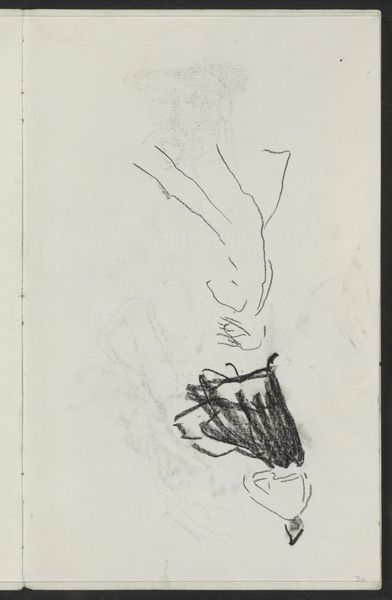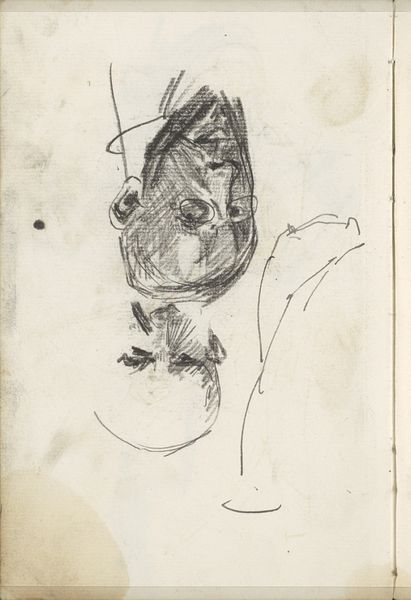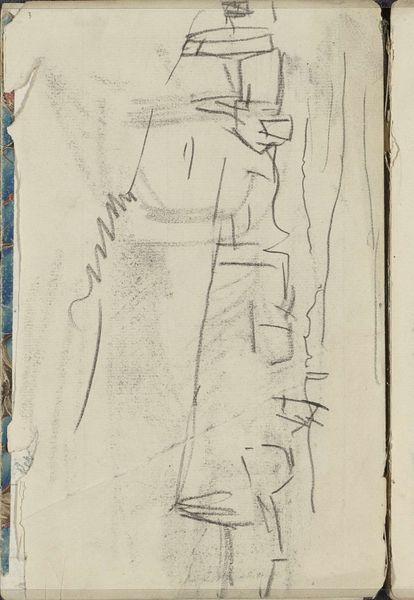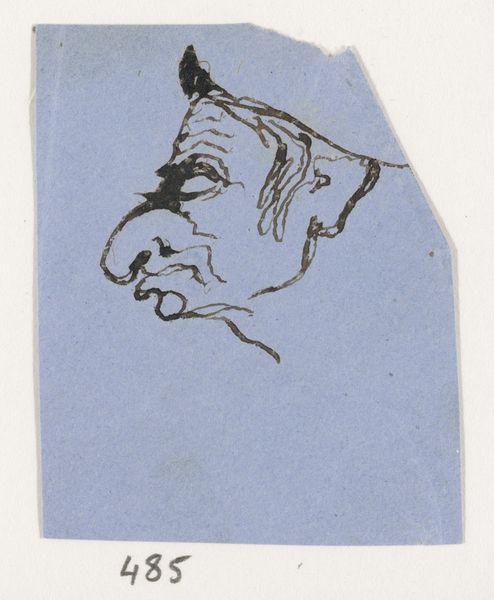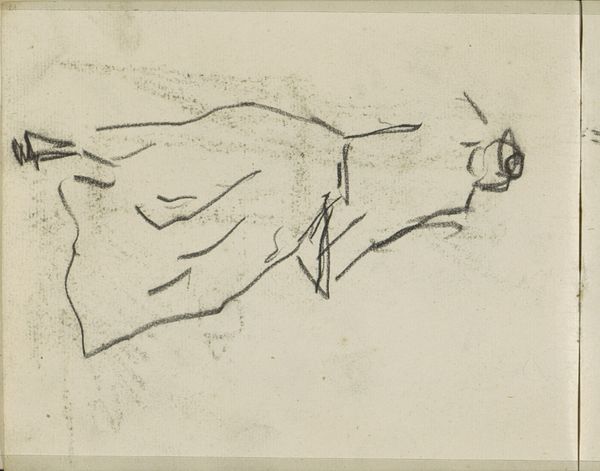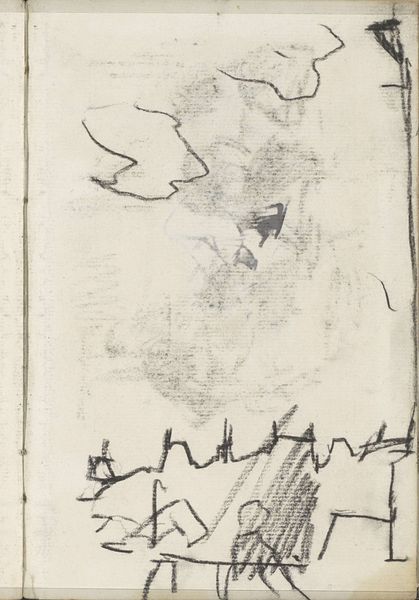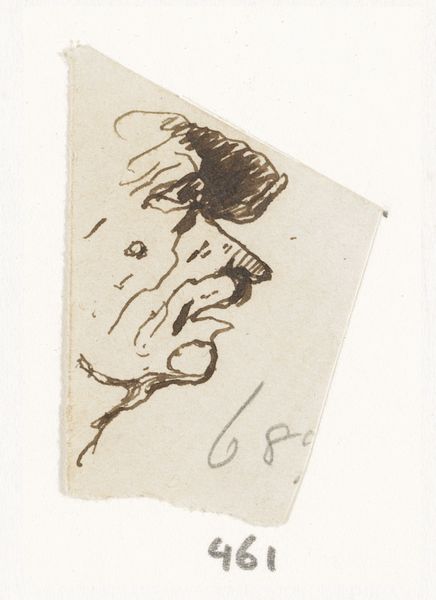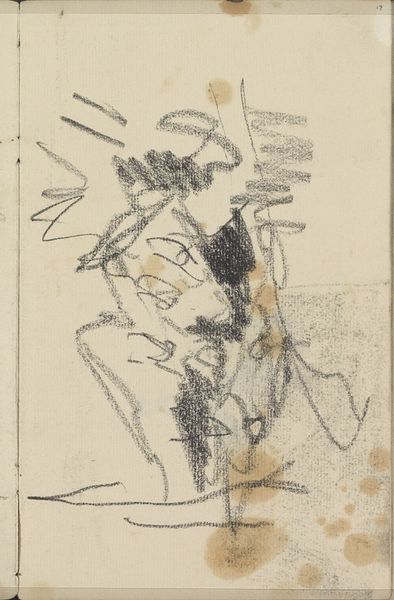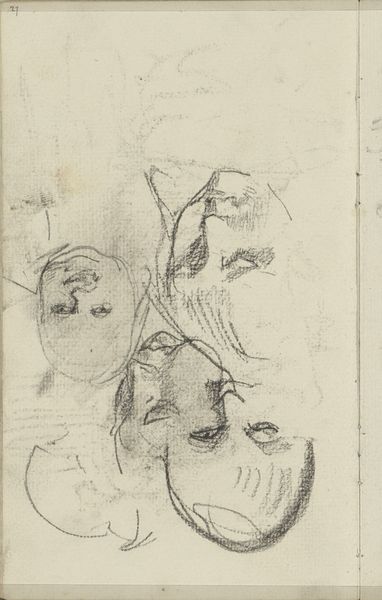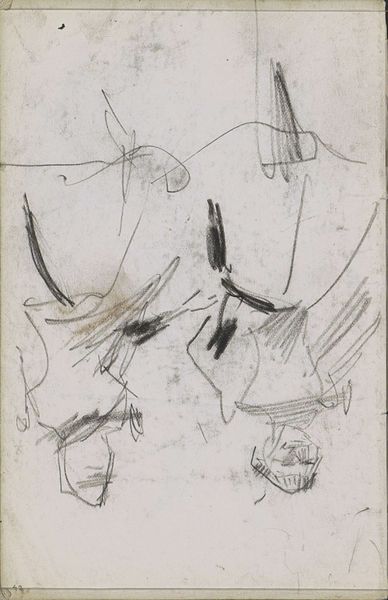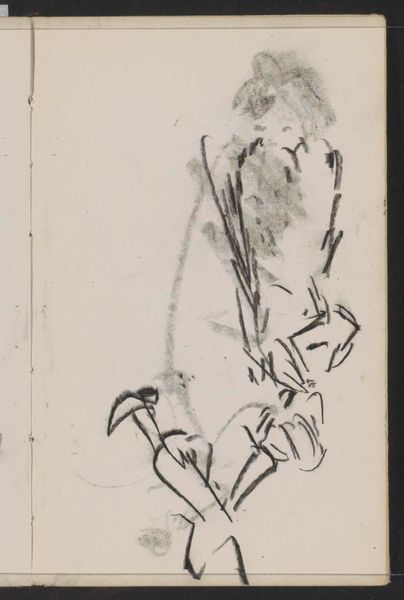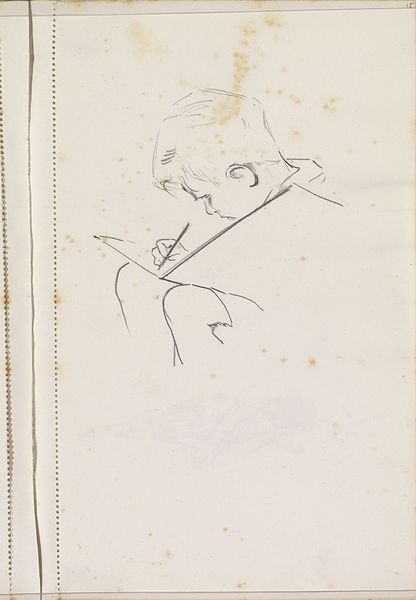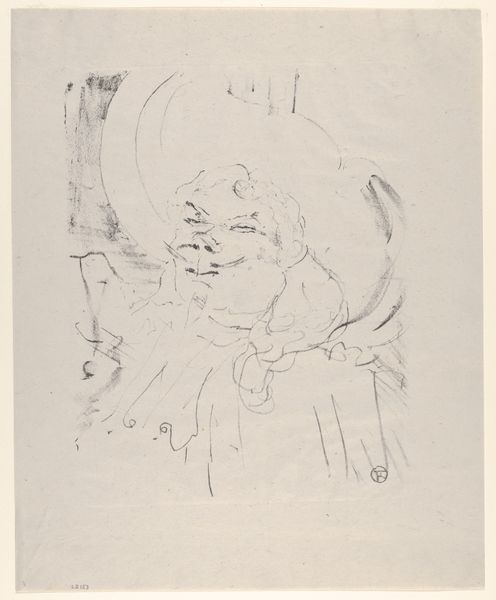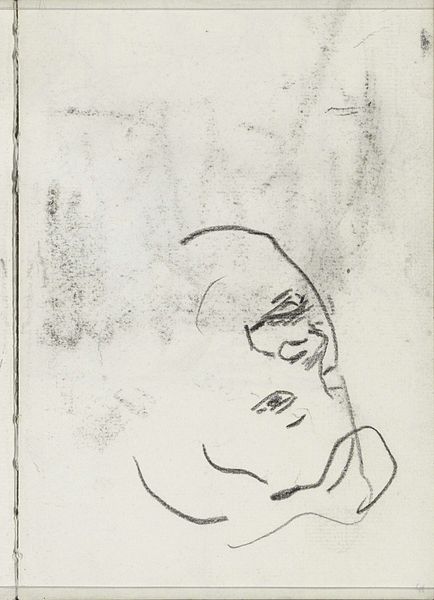
drawing, ink
#
portrait
#
drawing
#
imaginative character sketch
#
light pencil work
#
16_19th-century
#
quirky sketch
#
personal sketchbook
#
ink
#
idea generation sketch
#
sketchwork
#
ink drawing experimentation
#
sketchbook drawing
#
storyboard and sketchbook work
#
sketchbook art
#
realism
Dimensions: height 71 mm, width 55 mm
Copyright: Rijks Museum: Open Domain
Curator: Welcome. We’re looking at a drawing titled "Kop met pijp," or "Head with Pipe," created sometime between 1840 and 1880 by Johannes Tavenraat. It's currently held in the collection of the Rijksmuseum. Editor: My first impression is of something fleeting, almost dreamlike. The loose linework and indeterminate washes create a real sense of transience, of capturing a thought before it vanishes. Curator: Precisely. Tavenraat's approach emphasizes contour and gestural marks. Notice how the shading is minimal, restricted primarily to the areas defining the face and the odd cap. This suggests a conscious effort to emphasize line as the primary element in conveying form and expression. Editor: The pipe, though... that anchors the image. The figure is literally connected to a tradition of contemplation, of quiet rumination. The pipe has a long and culturally dense history. Curator: Indeed. It becomes a pivotal focal point, both grounding the sketch and serving as an extension of the figure’s introspective nature. Note the economy of line used to describe it, however; a minimalist approach creates maximum representational impact. Editor: What fascinates me is how the simple act of smoking a pipe can serve as a kind of shorthand for a certain type of intellectual or even perhaps working-class identity, it becomes something beyond its basic function. Curator: Perhaps, and to carry that line of thinking through, the figure, sketched so freely, invites the viewer to project identities onto him. There's no defined context, leaving room for interpretive speculation on the subject's status or social standing. Editor: So the act of smoking is elevated beyond mere habit or enjoyment and becomes symbolic. In our mind's eye, the pipe links our sketched subject to something much larger than himself and he, therefore, becomes more significant and worthy of our reflection. Curator: Ultimately, Tavenraat’s work prompts us to consider how an artist might employ simple means to activate complex interpretive potentials. Editor: And how potent seemingly minor details can become when viewed through the lens of cultural and individual perception. It is interesting how so little can suggest so much!
Comments
No comments
Be the first to comment and join the conversation on the ultimate creative platform.
